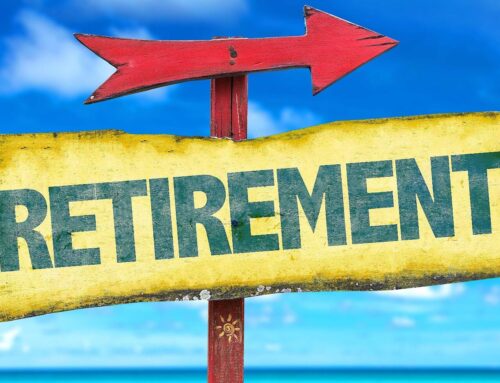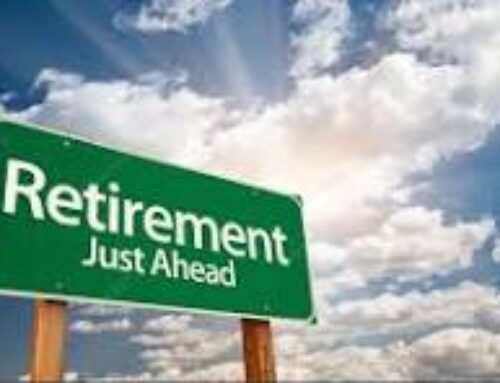Retirement Plans for Individuals & Businesses
A look at some of the choices.
Households are saving too little for the future. According to one new analysis, 41% of Gen Xers and 42% of baby boomers have yet to begin saving for retirement. In a recent financial industry survey, 35% of small business owners said they were planning to use the sale proceeds from their company for a retirement fund, an idea which comes with a flashing question mark.1,2
Do you need to build retirement savings? Take a look at these retirement plans:
SEP-IRA: low fees, easy to implement and maintain. These plans cover sole proprietors and their workers with no setup fees or yearly administration charges. Your business makes all the contributions with tax-deductible dollars. The amount of the contribution your company can deduct is the lesser of your contributions or 25% of an employee’s compensation. You can even skip contributions in a lean year.3,4
SIMPLE IRAs and 401(k)s: low maintenance, high contribution limits. In contrast to SEP-IRAs, Savings Incentive Match Plan (SIMPLE) IRAs are largely employee-funded. A worker can direct as much as $12,500 or 100% of compensation (whichever is less) into a SIMPLE IRA per year. That current $12,500 annual contribution limit rises to $15,500 for plan participants 50 and older. Matching employer contributions are required: you can either put in 2% of an employee’s annual compensation, or match employee contributions dollar-for-dollar up to 3% of the employee’s annual compensation.2,4
Does your company have less than 100 workers? Do you want a 401(k) plan that is relatively easy to administer? The SIMPLE 401(k) might do. This is a regular 401(k) with a key difference: the employer must match employee contributions in the manner described in the previous paragraph. As with the SIMPLE IRA, employee contributions are elective. Contributions to a SIMPLE 401(k) vest immediately. While you must file a Form 5500 annually with the I.R.S., no non-discrimination testing is necessary for these 401(k)s.2,4
Solo 401(k)s: a great way to “play catch-up.” Both pass-through firms and C corps can install these plans, which allow a solopreneur to contribute to a retirement plan as both an employee and an employer. In 2018, a business owner can direct up to $55,000 into a solo 401(k). As with a standard 401(k), participants age 50 and older can make a $6,000 catch-up contribution each year. If you are 50 or older, your maximum annual contribution could be as large as $61,000.2,5,6
If you are behind on retirement saving, a solo 401(k) presents an outstanding opportunity to help you grow your retirement fund. The catch is that your business must be very small and stay that way. You can only have one employee besides yourself, and that employee must be your spouse. Solo 401(k)s do need plan administrators, but no Form 5500 is needed until the plan assets top $250,000. If you have a corporation, your solo 401(k) contributions are characterized by the I.R.S. as business expenses. If your business is unincorporated, you may deduct your solo 401(k) contributions from your personal income.2
The solo 401(k) offers even more savings potential for a married couple. Your employed spouse can make an employee contribution to the plan (limit of $18,500/$24,500 annually), and you can then make a profit-sharing contribution of up to 25% of his or her compensation as the employer. You can even have a Roth solo 401(k).4,6
Roth and traditional IRAs: the individual retirement planning mainstays. These accounts currently let you save and invest up to $5,500 a year ($6,500 a year if you are 50 or older). Both permit tax-advantaged growth of the invested assets. With a Roth IRA, contributions are not tax-deductible, but distributions are tax-free provided I.R.S. rules are followed. Roth IRAs never require mandatory withdrawals when you reach your seventies. Withdrawals from traditional IRAs are taxed as regular income, but contributions are often fully tax-deductible; withdrawals must begin when the account owner is in his or her seventies.2,7
Roth and traditional 401(k)s: the small business standard. These plans now have annual contribution limits of $18,500 ($24,500 for those 50 and older). Your 401(k) contributions reduce your taxable income. Assets within all 401(k)s grow with tax deferral. Some 401(k) plans now feature a Roth option. The rules for Roth 401(k)s mirror those for Roth IRAs, with a notable exception: Roth 401(k) plan participants usually must begin taking mandatory withdrawals from their accounts once they reach age 70½.8,9
Contact the financial professional you know and trust today about these plans. You must build adequate retirement savings for the future, and your prospects for retirement should not depend on the future of your business.
Registered Representative, Securities offered through Cambridge Investment Research, Inc., a Broker/Dealer, Member FINRA/SIPC. Investment Advisor Representative, Cambridge Investment Research Advisors, Inc., a Registered Investment Advisor. Cambridge and North Light Financial Services are not affiliated. Cambridge does not offer tax advice. Office of Supervisory Jurisdiction: 46 Accord Park Drive / Norwell, MA 02061 Phone: 781-878-4063
This material was prepared by MarketingPro, Inc., and does not necessarily represent the views of the presenting party, nor their affiliates. This information has been derived from sources believed to be accurate. Please note – investing involves risk, and past performance is no guarantee of future results. The publisher is not engaged in rendering legal, accounting or other professional services. If assistance is needed, the reader is advised to engage the services of a competent professional. This information should not be construed as investment, tax or legal advice and may not be relied on for the purpose of avoiding any Federal tax penalty. This is neither a solicitation nor recommendation to purchase or sell any investment or insurance product or service, and should not be relied upon as such. All indices are unmanaged and are not illustrative of any particular investment.
Citations.
1 – fool.com/retirement/2018/01/29/guess-how-many-gen-xers-and-baby-boomers-have-no-r.aspx [1/29/18]
2 – inc.com/hr-outsourcing/best-retirement-plans-for-small-businesses.html [2/2/18]
3 – irs.gov/retirement-plans/retirement-plans-faqs-regarding-seps-contributions [10/25/17]
4 – trustetc.com/resources/investor-awareness/contribution-limits [2/6/18]
5 – irs.gov/retirement-plans/one-participant-401k-plans [10/25/17]
6 – nerdwallet.com/blog/investing/what-is-a-solo-401k/ [7/24/17]
7 – cbsnews.com/news/new-tax-law-roth-vs-traditional-ira-or-401k/ [2/6/18]
8 – investopedia.com/ask/answers/112515/are-401k-contributions-tax-deductible.asp [1/30/18]
9 – forbes.com/sites/greatspeculations/2017/03/17/__trashed-55/ [3/17/17]




